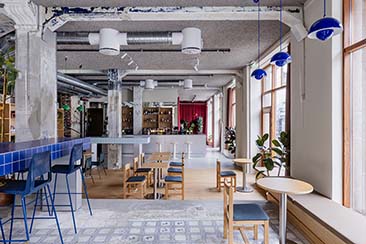Many people dream of turning a creative interest — writing, design, art, photography, music — into a meaningful career. The leap from something enjoyed as a hobby to a fulfilling profession can feel both thrilling and daunting. Yet it’s entirely achievable. In this article, we walk through the journey from passion to profession. You’ll see how to identify your creative strengths, prepare for the transition, build credibility, and ultimately secure a role that aligns with both your talents and your ambitions.

Recognize and Clarify Your Creative Passion
First, you must understand what truly drives you. Is it storytelling, sketching, composing, or capturing moments? Ask yourself: what activity energizes me? What would I do all day even if I weren’t paid for it?
– List your creative strengths and interests. Write down everything you enjoy and are reasonably good at.
– Observe what excites you most. Notice when time seems to fly—whether you’re writing, editing, illustrating, or crafting.
– Distill your focus. Having dozens of creative interests is wonderful but pick one or two to cultivate professionally.
When your choices are clear, the path forward becomes more manageable.
Research and Explore Related Career Paths
Once your creative focus is defined, study actual careers that reflect it:
– What roles exist in that area? (e.g. content writer, graphic designer, video editor)
– Which industries hire for those roles—publishing, marketing agencies, freelance networks?
– What qualifications or skills do these roles demand?
Use job descriptions, professional portfolios, and informational interviews. Read job boards, LinkedIn postings, and creative communities. You’ll quickly see patterns: perhaps most employers look for a strong portfolio, or certifications in certain tools like Adobe Creative Suite. This practical insight shapes realistic next steps.

The Importance of a Good Resume
In the creative world, portfolios speak volumes; but don’t underestimate the power of a solid resume, too. A resume gives structure and clarity, especially when you’re stepping into a new field. It highlights transferable skills—project management, collaboration, client communication—even if your previous work was outside the creative sphere.
One efficient way to streamline this step is using LiveCareer’s resume builder for your next job. That tool helps organize your experience clearly and adapt it to creative roles. Even if your background isn’t yet design-heavy, a crisp, well‑formatted resume with impactful phrasing can complement your portfolio and strengthen your application.
Build Skills with Purpose
Turning passion into profession requires skills beyond raw enthusiasm. Here’s how to level up purposefully:
– Take targeted courses or workshops. Whether online or in-person, learning fundamentals and advanced techniques is invaluable.
-Practice consistently. Set aside dedicated time each week to hone your craft—writing, designing, composing.
– Experiment on real projects. Volunteer your creativity for friends, nonprofits, local startups. Light pressure, big learning.
– Request feedback. Join communities—social media groups, critique circles, forums—where peers can offer honest evaluation.
A focused and steadily growing skillset becomes your foundation. As you learn more, your confidence and direction strengthen.
Create and Curate a Strong Portfolio
Your portfolio is your creative resume. It’s proof of ability. So build it carefully:
– Select only your best work. Quality over quantity. Showcase variety, but don’t overwhelm.
– Present thoughtfully. Provide context for each piece: goals, process, your role, results.
– Publish online. Use a clean, easy-to-navigate website or portfolio platform. Mobile-friendly matters.
– Update regularly. Swap out older pieces as your skills evolve.
Your portfolio will open doors. When someone sees polished, relevant projects, your creative promise becomes tangible. Be bold and professional.

Network Strategically and Authentically
Creative careers don’t exist in a vacuum. Relationships matter. Here’s how to network with intent:
– Connect with professionals. Attend workshops, webinars, meetups, creative conferences. Ask questions. Listen.
– Follow industry figures. Comment meaningfully on their work, share insights, build rapport.
– Offer help first. Contribute to collaborative projects, guest post on blogs, offer design for free or low cost to gain exposure.
– Keep relationships alive. Periodically check in with contacts—share updates, congratulate them on milestones, send helpful tips or articles.
Genuine connections can lead to mentorship, referrals, collaborations, and ultimately, opportunities.
Gain Real-World Experience
Practical experience builds confidence and credibility. Consider these avenues:
– Freelance on small projects. Try marketplaces, local businesses, or community briefs.
– Intern or apprentice. Even if it’s unpaid, the experience and networking can be invaluable.
– Collaborate in creative communities. Participate in challenges, join group projects, share unfinished drafts openly.
– Offer to help with non‑profits or events. Real constraints, real deadlines, real impact.
Every real assignment—no matter how small—adds context to your portfolio and develops your instincts for client work.
Develop Your Personal Brand
A creative career thrives on subtle identity cues—your style, voice, aesthetic. Craft your brand:
– Define your style. Is your voice earnest, whimsical, bold? Are your visuals minimalist, colorful, moody?
– Consistency across platforms. Use the same username, profile photo, and tone on LinkedIn, portfolio site, Instagram, etc.
– Share your process. Post work-in-progress, reflections on challenges, insights behind your choices. People love the story behind the work.
– Create content. Write short posts, make reels, shoot stories with creative behind‑the‑scenes. They help you engage and grow.
Your personal brand makes you memorable. It helps clients and employers perceive you not just as a one-off talent, but as a creator with a distinctive voice.

Apply Smartly to Jobs and Projects
When you’re ready to go pro, apply strategically:
– Tailor each application. Customize your portfolio link, cover letter, and resume to match the job’s style and requirements.
– Use keywords thoughtfully. Many job systems auto-filter applications. Visit job listings to pick terms like “copywriter,” “visual storytelling,” or “UX design” that match descriptions.
– Track your efforts. Keep a spreadsheet of where and when you applied, and any follow‑up tasks or contacts.
– Follow up politely. If you haven’t heard back after a week or two, a short friendly follow‑up email demonstrates professionalism and initiative.
Being selective but proactive maximizes your chances of landing a fit that’s both creative and career‑worthy.
Embrace Growth and Iterate
The first creative job might not be perfect. That’s okay. What matters is momentum.
– Reflect on feedback. Ask clients or employers what went well and what could improve.
– Update your portfolio and resume. Include new work and refine how you describe it.
– Set new goals. Maybe larger clients, higher pay, or a different medium. Keep pushing.
– Stay curious. Trends, tools, platforms evolve. Keep learning to stay fresh.
Every project gives you more clarity—not just about your skills, but about the kind of work you really want to do.
Conclusion
Transitioning from passion to profession in the creative realm is both exciting and entirely within reach. You start by identifying your creative strength, then grow skills, craft a portfolio, build your brand, and step into real work. A strong resume supports your portfolio, and purposeful networking opens doors. With dedication and reflection along the way, you’ll transform what you love into work that matters. Keep at it. Your creativity can become a lasting and fulfilling career.








